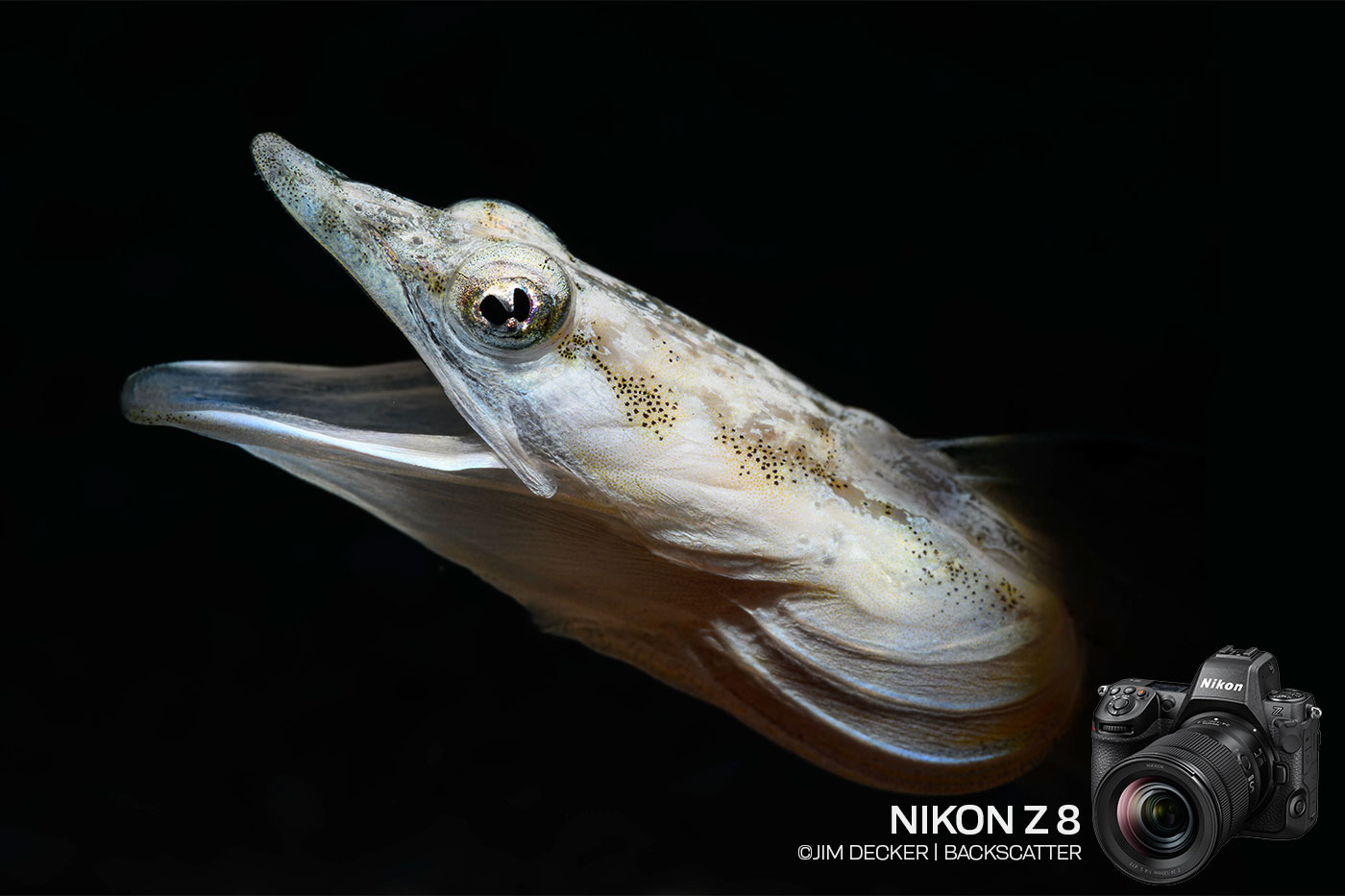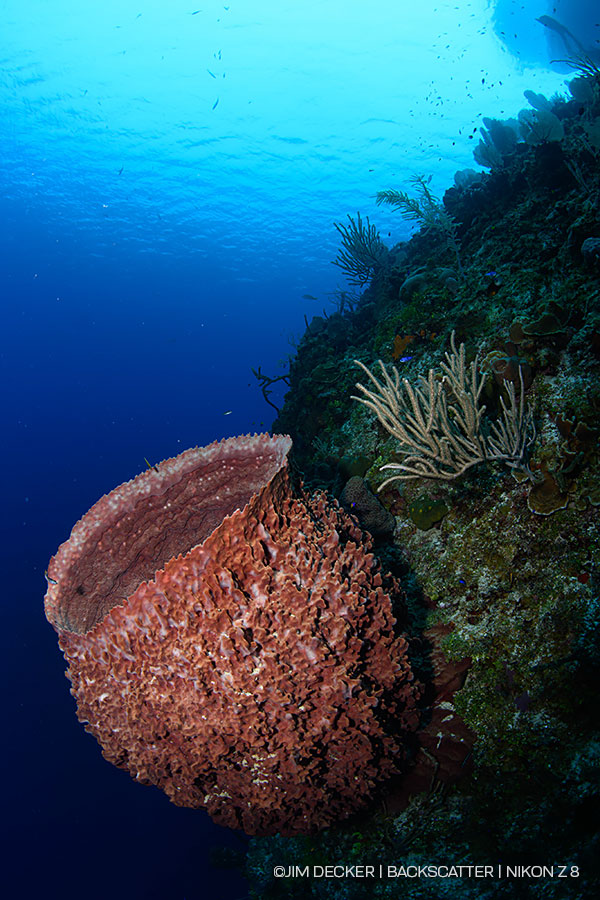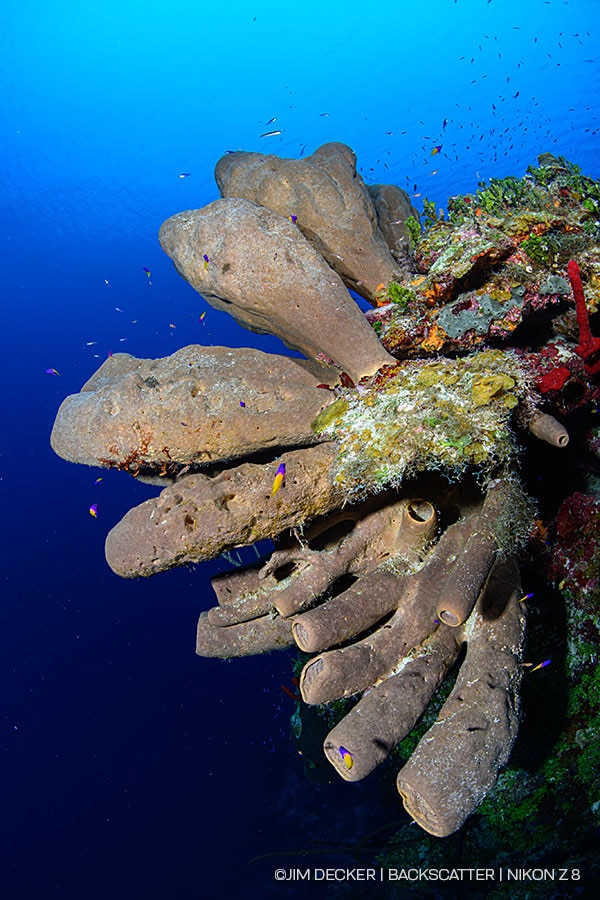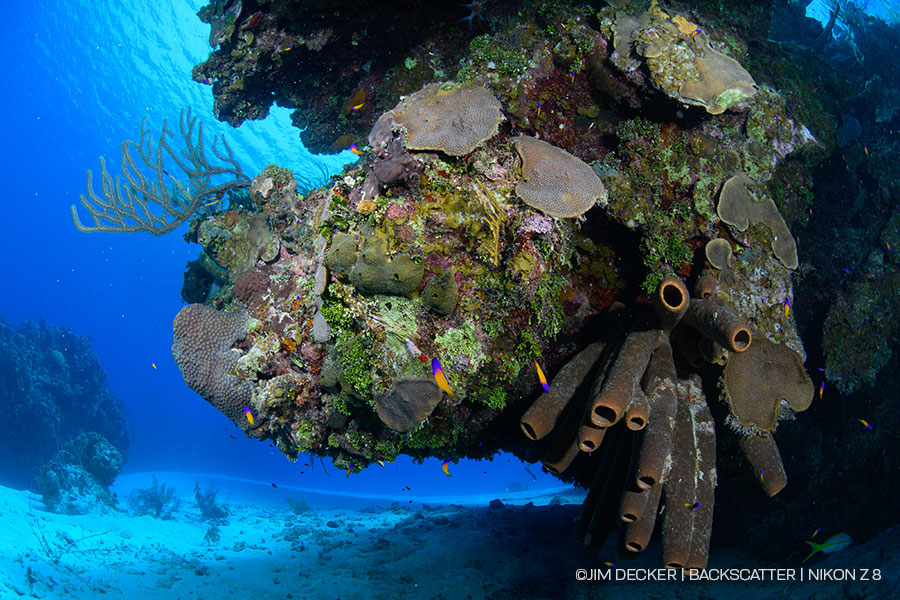
In this article, we'll provide an in-depth review of the highly anticipated Nikon Z8 for underwater photography from our first-hand perspective. We’re going to explore and discuss the key aspects, such as image quality, autofocus, the differences from previous Nikon mirrorless and SLR cameras, and the major video improvements it offers - plus a whole lot more.
Read on to learn everything that underwater photographers need to know.
Watch our comprehensive video review for the Nikon Z8 camera, starring Backscatter CEO Jim Decker and Producer Robin Dodd.
Mini Z9 or Mirrorless D850?
One burning question we had was where the Nikon Z8 fits in the Nikon lineup. Is it a mirrorless version of the Nikon D850 or a mini Nikon Z9? Well, it turns out that it's a bit of both. While the Nikon Z9 is a larger camera, the Nikon Z8 shares many similarities in terms of performance, autofocus, shooting speed, and image quality. The main difference lies in the battery life and the physical size. Underwater photographers will need to decide whether they’ll prioritize a bigger battery or a smaller camera body.Comparing the Nikon Z8 to the Nikon D850, the most noticeable difference is the viewfinder. The Nikon Z8 features an electronic viewfinder, while the Nikon D850 has an optical one. However, the Nikon Z8 offers a significant upgrade with its 20 frames per second burst shooting and improved autofocus speed and tracking. We were particularly impressed with the 3D autofocus tracking, which worked flawlessly and exceeded our expectations.
In terms of other Nikon full-frame mirrorless cameras, the Nikon Z8 surpasses the Z7 series by a wide margin. We found the Nikon Z7 II to be a significant downgrade compared to the Nikon D850, because of the slower focus speed, slower subject acquisition, and lack of 3D autofocus tracking, but the Nikon Z8 represents a definite upgrade. It offers the same beloved 3D autofocus tracking, outstanding image quality, and superb dynamic range detail, making it a worthy successor to the Nikon D850.
When it comes to image quality, the Nikon Z8 doesn't disappoint. It shares the same sensor as the Nikon D850 and the Nikon Z9, so you can expect the same outstanding image quality. The camera produces sharp, detailed, and vibrant images, making it a reliable choice for underwater photographers who prioritize top-tier photo quality.

Nikon Z8 | Nikon 8-15mm | 1/125 | ISO 200 | ƒ11

Nikon Z8 | Nikon 8-15mm | 1/100 | ISO 200 | ƒ13
The same image quality that we’ve come to love from Nikon flagship cameras is present on the Nikon Z8 - vibrant colors, wide dynamic range, and super sharp detail.
What sets the Nikon Z8 apart? During our shoot, we couldn't help but marvel at its speed and responsiveness. The camera boasts an impressive 20 frames per second burst shooting capability, an essentially bottomless buffer, and lightning-fast autofocus and tracking. But what's even more remarkable is that the Nikon Z8 features a purely electronic shutter, eliminating any lag and blackout in the viewfinder. It truly revolutionizes the shooting experience.
While the lack of a mechanical shutter has its advantages, it does come with some limitations. For instance, the flash sync speed is limited to 1/200th of a second, slightly slower than the Nikon D850's 1/250th of a second. All Nikon full frame mirrorless cameras share this 1/200 sync speed, along with most Canon full frame mirrorless cameras, though Sony can go up to 1/400 on their flagship A1 camera.

The 1/200 flash sync speed limit could make it tough to pull down the background exposure on some shots.
Nikon Z8 | Nikon 8-15mm | 1/200 | ISO 320 | ƒ11





